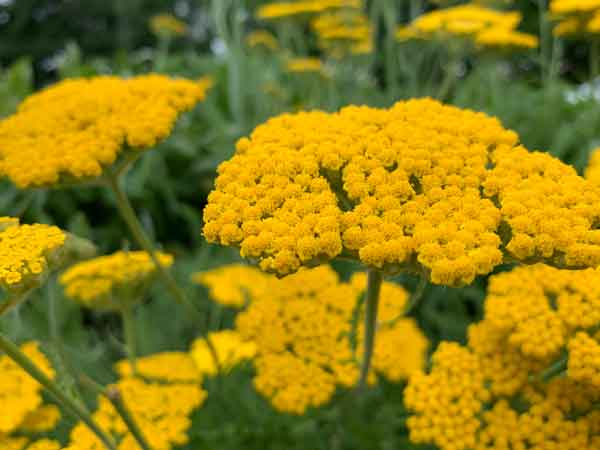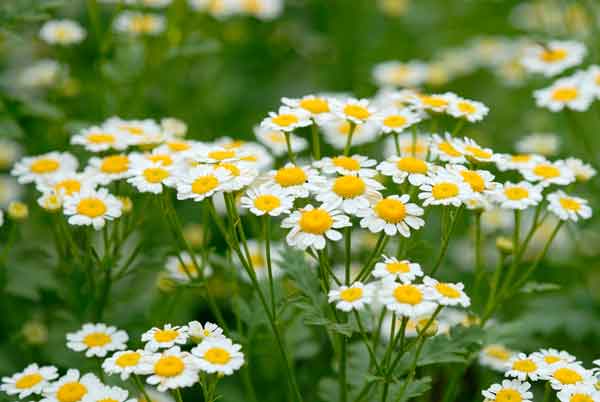I’m struck by the term “alternative”, when natural agriculture practice is in alliance with medicinal plants that keep us healthy. Herbs have been used for many generations before normative conventional medicine started to synthesize plant constituents to heal us. Why should natures’ basic benefits to everyone be an option? You think it would be mainstream.
Herbalism was practiced in rural areas, mostly in remote farms. Due to distance factors, doctors would use herbs and plants to ameliorate medical conditions, and the people living close to the land, equally used nature to heal themselves when they did not have access to more modern medicine. Medicinal plants have been regarded as natures pharmacopeia and many of us continually reap its benefits today.
If a farmer cut himself in the field and experienced bleeding, he would chew yarrow, Achillea millefolium, to create an immediate poultice applying it to the wound to staunch bleeding. Common Yarrow is anti-inflammatory, antibacterial, and antioxidant. This plant grows in abundance in fields, and along roadsides.

Upon entering his house, the farmer’s wife would likely administer a natural organic healer and disinfectant, such as hypercal solution, to further treat the lesion. Hypercal solution is a mixture of pure water, and Hypericum Perforatum, otherwise recognized as St. Johns Wort. This natural medicinal plant was frequently used as early as ancient Greece, for cuts, stings, and bites to disinfect open wounds and flush bacterial infection.
Once disinfected, you can speed healing with Calendula Officinalis. Calendula is a marigold flower, from the Asteraceae family. It has anti-inflammatory, and antiseptic properties that help heal skin quickly, without scarring.

If you would have a laceration into bone, comfrey, Symphytum would be in order, otherwise known as knitbone, or boneset. It was used during the war by doctors, to help heal delicate bones. A simple little purple field flower, that’s a key remedy for fractures, broken bones, injuries to the periosteum, which is the outer connective tissues covering the bone, and was also administered to patients following amputation, for phantom limb pain.
All in a day’s work out at the farm. The healing protocol would continue, now from the inside out, with the help of brewing a herbal infusion using Arnica Montana, referred to also as Wolfs Bane, mixed with a dash of chamomile, and honey. Arnica is exceptionally good for pain and discomfort of any kind. It’s used as a polychrest on animals and humans for bruises, sprains, skin complaints, joint and muscle aches, inflammation, bites, and burns to alleviate discomfort and promote healing.
In agriculture, chamomile is regarded as the “plants physician” because it has positive effects on surrounding plants. Chamomilla Matricaria, as tea offers soothing and quieting qualities to the patient.

Phytotherapy is the use of plants to treat ailments. Herbalists will use natural methods of extracting the plant constituents to make poultices, tinctures, salves, and medicinal teas to treat an unwell patient, be it animal, or human being. Science has a bit of an understanding of some of the constituents, but they still cannot understand “all” the medicinal parts today. The ones that they do comprehend, many have been synthesized by pharmaceuticals that physicians dispense to patients to make them well.
Herbal plant-based remedies don’t have such harsh side effects as some conventional medicines. For example, penicillin was just a bit of mold in the day Alexander Fleming discovered it. Today’s broad-spectrum antibiotics may have adverse reactions on people, with some of the strong medications destroying the gut microbiome, leaving one vulnerable to bowel diseases.
It has sometimes been said by doctors that: “you would need to treat the patient twice, once with the medication, and then from the medication, following through with soothing herbal remedies."
Herbal medicine is a holistic practice that looks at the person to be treated and not just the disease or syndrome. It considers the mental, physical, and spiritual wellbeing of the individual, as well as the social and environmental dynamics within that person’s life.
It’s focused on healing the individual, using unique remedies, as opposed to allopathic medicine, that focuses on a one pill fix all concept, or one vaccine to do the trick to keep you safe from a virus. Human beings are unique, each with a different constitution therefore, herbal remedies address issues well, when administered accordingly.
These amazing plants which grow from the soil, are often seen on picturesque country sides, may be found in your natural store, or local apothecary.

Alternative agricultural farming is intended to reduce agricultural pollution, enhance sustainability, improve efficiency, and promote profitability by these means. It fundamentally emphasizes a natural nutrient cycle, nitrogen fixation, and pest-predator relationships. Alternative agriculture aims to assure production efficiency while respecting soil, water, energy, resources, conserving tillage methods and avoids over harvesting or depleting valuable medicinal plants and herbs that may become scarce in areas. It tries to follow natures rhythm.
Nature is a good alternative option to man-made, because she beholds a logical structure which is intelligent, gentle but firm when deployed, and her inherent bounty is there to share with humanity. Her force is unequalled to mankind. Only mutually and respectfully joined with her, can our humanity yield favorably to future generations.
Soil for humanity is colossal to everyone and everything. Our soil is a living breathing organism of live activity geared towards sustaining this planet. We’ve been distracted living busy lives for such a long time that we did not come to realize the value of our soil. Join us on our journey building awareness and cultivating this natural relationship we have with our soil, that promotes life on Earth.
Remember that sharing is caring, so feel free to forward this article to your friends!
Disclaimer: this article aims to explore the functional beauty of plants available to us from nature. They work well on ailments, however for any serious medical disposition, it’s best to work with your medical practitioner, or naturopathic professional, so that you have your appropriate healing protocol. SFH wants all their readers to be safe and healthy.















